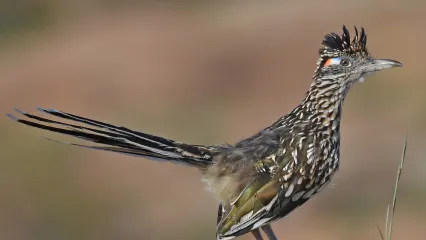
Description
This species is a striking sparrow with four black stripes and three white stripes (or tan stripes in juveniles) extending from the base of the bill over the top of the head. Its neck, throat, breast and belly are a uniform gray or dull white. It has an orangish-pink bill, and there are two thin white stripes or bars across each wing. White-crowned sparrows closely resemble the white-throated sparrow, which has a gray bill, a distinct white throat patch and a small yellow spot between the bill and each eye.
Size
Approximately 5.9 to 6.3 inches in length. Wingspan of 8.3 to 9.4 inches.
Habitat
This sparrow is often seen in brushy pastures, woodlands, thickets and tall grasses and weeds along fencerows. They are more common in western and central Oklahoma and are usually associated with open habitats and grasslands. They commonly visit rural bird feeders and residential neighborhoods on the fringe of towns.
Life Cycle
At feeders, white-crowned sparrows eat millet, milo and black-oil sunflower seeds. Away from feeders they forage for small seeds and insects. White-crowned sparrows are found statewide from early October to early May.
How To Observe
These birds are usually seen on the ground under feeders or near tall grasses, wildflowers, or shrubs. They prefer to feed from ground level and will visit platform-type feeders that are placed 6 to 18 inches off the ground. They usually travel and feed in flocks of six to 30 birds, and often join with Harris’s sparrows and field sparrows to form mixed-species flocks.


